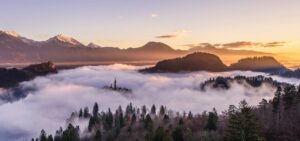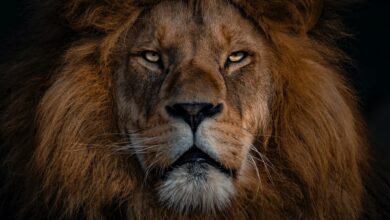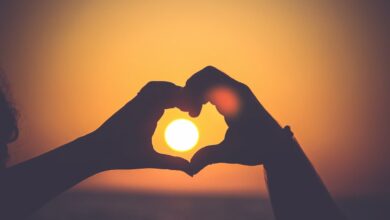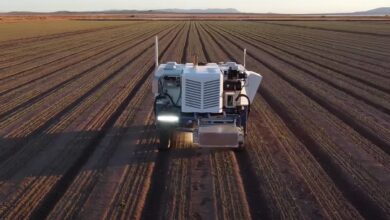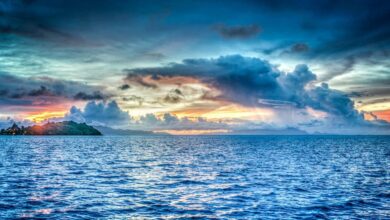The Water Cycle
People have a tendency to think of the water cycle as a straightforward cycle consisting just of evaporation, condensation, and precipitation. The reality, despite the fact that this might serve as a helpful model, is far more difficult.
The movement of water and the ways in which it might affect different ecosystems on Earth are incredibly complicated and only partially understood.
Earth’s water cycle
We couldn’t survive without water. Each of the key components of Earth’s climate system—air, clouds, the ocean, lakes, plants, snowfall, and glaciers—is interconnected by water in one of its three phases (solid, liquid, or gas).
Let’s talk about these processes in detail.
Evaporation
To evaporate, water must undergo a phase transition from its liquid to its gaseous form. Significant amounts of heat are released and absorbed during the transformation, almost 600 kilocalories of energy for every gram of water. 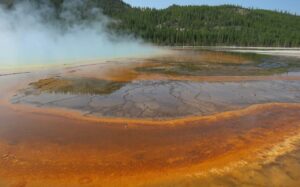
The quantity of natural evaporation in any given region is often affected by solar radiation and other elements including air temperature, vapor pressure, wind, and atmospheric pressure.
Raindrops, as well as open bodies of water like oceans and lakes, are susceptible to evaporation. Water that has accumulated on plants, dirt, rocks, or snow may also cause this.
Human activities can contribute to evaporation. The water that has condensed on the surfaces of a heated building evaporates. Water vapor is a kind of moisture that has evaporated from the ocean, land, or other bodies of water and been carried into the atmosphere. This leads to the usual humidity in the air.
Condensation
Typically, water vapor condenses into a liquid form from its vaporous condition. Dew, fog, and clouds are all products of water vapor condensing on tiny particles in the air.
Sea salts, atmospheric ions generated by lightning, and combustion products including sulfurous and nitrous acids are the most active particles that create clouds.
If the air is cooled or if the quantity of vapor in the air is increased to its saturation point, condensation will occur.
Water vapor releases the same substantial quantity of heat (600 kcal of energy per gram) into the environment as it condenses back into a liquid form.
Precipitation
When droplets of water from the sky land on the ground, this phenomenon is known as precipitation. Clouds produce rain by a combination of two processes: coalescence and ice-crystal growth.
Once a drop of water reaches a certain size, it is subject to the forces of gravity and frictional drag. When one drop falls, it creates a wake that other, smaller drops may ride and eventually overtake and merge with.
Water that precipitates might either enter an existing body of water or accumulate on land. It is then disseminated in a number of ways. Small, sporadic rainstorms lead to a fast rate of evaporation, which in turn returns a lot of water to the air.
Interception
Interception is the act of blocking or blocking off a part of the water’s path along its route to becoming a stream. Vegetation may act as a barrier, or water can be stored in depressions like puddles and land features like rills and furrows.
Water that is intercepted on the ground surface at freezing and subfreezing temperatures may have a significant impact. Additionally, snow and ice that is falling might be caught by plants.
Interception is greatest when snow falls on evergreen trees, such as those in conifer and hardwood forests that have not yet shed their leaves.
Infiltration
The term “infiltration” refers to a physical process when water moves through the contact between the soil and the atmosphere. Conditions at the soil’s top layer control the surface phenomenon.
Soil permeability and soil porosity are two factors that affect the rate of water movement.
Puddling of water at the soil’s surface due to raindrop impact, soil texture, and structure, initial soil moisture content, decreasing water concentration as water moves deeper into the soil, filling of pores in the soil matrices, changes in soil composition, and swelling of the wetted soils, which in turn close cracks in the soil all play a role in determining the infiltration rate.
The water that eventually evaporates or runs off the ground might have been absorbed and held in the soil.
Percolation
Water percolates as it moves downward through soil layers due to gravity and upward due to capillary action. Gravity is the primary propulsion mechanism for groundwater.
Water may be stored safely and naturally in underground geological formations. Water may also be channeled via a variety of other mediums. Aquifers are geological structures that move large amounts of water from one area to another, allowing for greater economic growth.
Water may flow because of spaces, or pores, in the Earth’s crust. Certain geological features are able to recycle water to the surface.
Transpiration
As a daytime biological activity, transpiration is most active while the sun is out. Plants release their internal water supply into the atmosphere as vapor via their many leaf pores.
Transpiration is a process used by plants for the purpose of transporting nutrients to the shoot and leaf tips and reducing leaf temperature under direct sunlight. Quickly changing leaves might have a much lower temperature than the ambient air.
The soil’s plant composition has a major impact on transpiration, as does the intensity of sunlight reaching the plants. To the point that the plant experiences a water shortage, its water-releasing cells (stomata) will remain open.
After then, the rate of transpiration slows considerably. The majority of the water plants take in is lost via transpiration.
Runoff
Runoff is the water that drains from a watershed or drainage basin and into a water body at the surface, such as a stream. In most cases, this refers to the portion of a stream’s flow that is untouched by any dams, reservoirs, or other man-made structures. 
Direct precipitation, surface runoff from land surfaces and channels, subsurface runoff from surface soils infiltrating and moving laterally towards the stream, and groundwater runoff from deep percolation through the soil layers all contribute to the flow.
Some of the groundwater’s flow joins the stream fast, while the rest may take some time to catch up. The runoff is formed when all of the individuals flow to join the stream. Streamflow, also known as straight runoff or base flow, is the entire runoff in stream channels.
Storage
In the global water cycle, water is stored in three main places. The atmosphere is a reservoir, as is the surface of the Earth, and the ground also serves as a reservoir for water.
The soil and rock composition at storage sites determine the nature of the storage that may take place there, both above and below ground. Underground storage occurs in soil, aquifers, and rock formations, whereas surface storage occurs in seas, lakes, reservoirs, and glaciers.
Take Away
Water is constantly being moved about the Earth and the atmosphere, as seen by the water cycle. It’s a complicated system made up of numerous moving parts.
The water cycle consists of liquid water evaporating into water vapor, which then condenses into clouds and precipitates back to Earth as rain or snow. The atmosphere is constantly re-circulating water in its many stages.
Runoff, infiltration, and percolation are all ways in which liquid water moves over and through the land (groundwater). When plants take in water from the ground (known as “plant uptake”), that water eventually ends up in the air as vapor (transpiration).
A direct transformation from solid ice and snow to gas is possible (sublimation). When water vapor condenses, the reverse phenomenon may occur (deposition).
